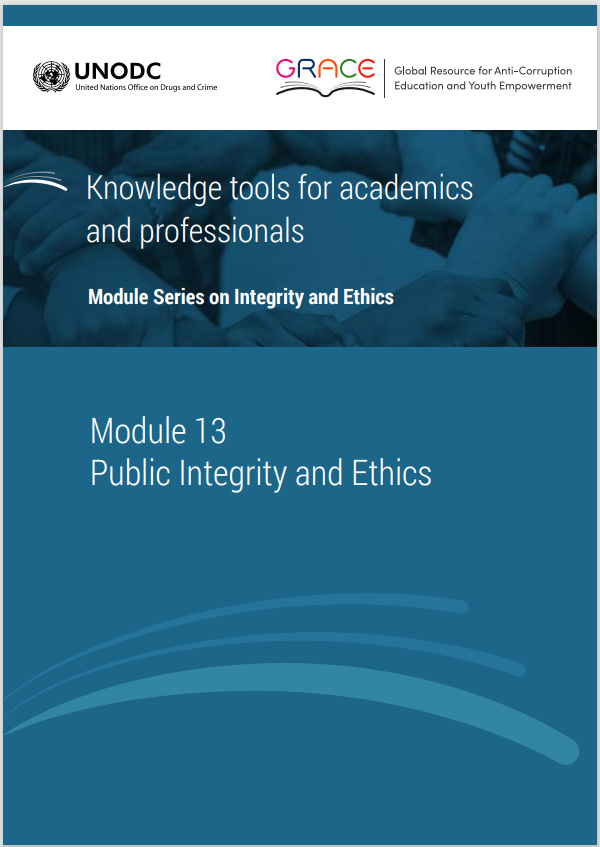This module is a resource for lecturers
Core reading
This section provides a list of (mostly) open access materials that the lecturer could ask the students to read before taking a class based on this Module.
- Eagleman, David (2016). How I decide? In The Brain: The Story of You. Edinburgh: Canongate Books, pp. 107-144. » The book presents new findings of neuroscience on how our brain works. The chapter "How do I decide?" provides an explanation of the both the rational and emotional nature of decisions. It discusses some ethical decisions in that context. It helps understand why process is key to ethical education and to developing public ethics and integrity. The book is not freely available online but the BBC film version is freely available.
- Gilman, Stuart C. (2005). Ethics Codes and Codes of Conduct as Tools for Promoting an Ethical and Professional Public Service: Comparative Successes and Lessons . World Bank. » The document offers a concise introduction to public values and its first part explains the connection between the democratic system, its values and public ethics codes. Its style is simple and accessible even for students from disciplines far from the subject because it was written for development practitioners.
- Lewis, Carol W. and Stuart C.Gilman (2012). The Ethics Challenge in Public Service: A Problem-Solving Guide. San Francisco: Jossey-Bass, pp. 1-44 and 115-138. » An authoritative book about public ethics that helps to understand the ethics challenge in public service and offers practical guidance to deal with ethical issues. The Introduction and Chapter 1 offer a comprehensive introduction to public ethics regimes and public integrity and into core public ethics values and principles. Chapter 5 gives detailed explanation and guidance to acting in ethical dilemma situations.
- OECD (2017). Recommendations on Public Integrity . Paris. » A summary that reflects state-of-the-art concepts of public integrity. It captures the systemic approach of public integrity management, the necessary activities and their linkages to society. The document is short, concise, written in a style accessible for all, nicely illustrated and available in multiple languages.
 Next page
Next page
 Back to top
Back to top
